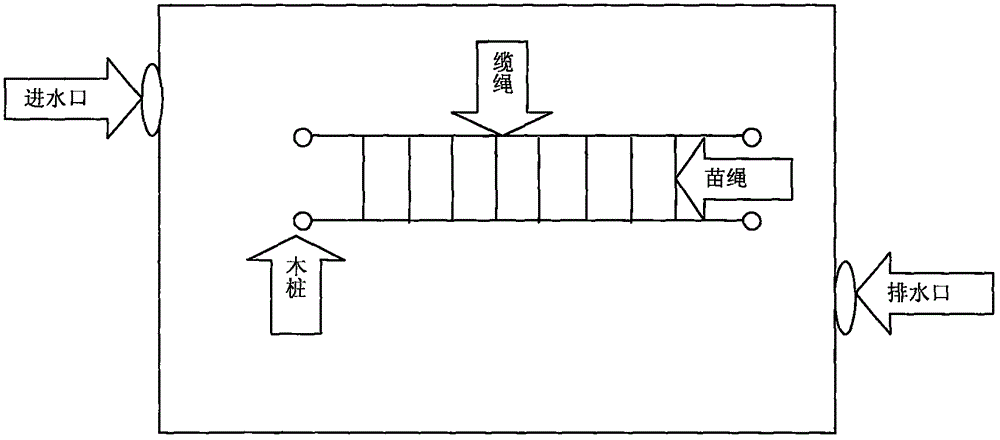Asparagus pond culture method
A cultivation method and technology of Astragalus, applied in the fields of botanical equipment and methods, climate change adaptation, gardening, etc., can solve the problem of high-yield cultivation of Astragalus in northern ponds, etc.
- Summary
- Abstract
- Description
- Claims
- Application Information
AI Technical Summary
Problems solved by technology
Method used
Image
Examples
Embodiment 1
[0067] 1. Pond culture environment
[0068] Shandong Laizhou Sea Cucumber Breeding Pond has an area of 800 square meters and an average water depth of 3 meters. The bottom of the pond is flat sand with an average transparency of 50cm. The water inlet pipeline is connected to the nearby sea area, and new seawater can be imported for 4 consecutive days during the spring tide, and the seawater is fresh and odorless. Open the drainage pipe at the same time as the water enters, and remove the stale seawater in time. During the breeding season, the salinity of the seawater in the pond is kept at 28‰~32‰. Due to the high density of sea cucumbers in this pond, the excrement of sea cucumbers makes the water color of the pond darker, and the pond has eutrophication.
[0069] 2. Vegetable selection: From the asparagus cultivated in Rongcheng sea area on April 10, choose the asparagus that grows well, has no disease and rot, is purple in color, and has few miscellaneous algae as the se...
Embodiment 2
[0094] 1. Pond culture environment
[0095] The fish breeding pond in Rushan, Shandong has an area of 1,800 square meters and an average water depth of 2.5 meters. The bottom of the pond is flat sand with a high mud content. The water inlet and drainage pipes are connected to the nearby sea area, and the sea water is fresh and odorless. During the breeding season, the salinity of seawater in the pond is maintained at 28‰~30‰. The fish breeding density in this pond is relatively low, but because of the discharge of industrialized breeding wastewater, its transparency changes little, and the pond has eutrophication.
[0096] 2. Vegetable selection: Asparagus with good growth, no disease and rot, purple color and few algae was selected from the Asparagus cultivated in Rongcheng Sea Area on April 20, and the length of the algae was about 25cm. During transportation, keep the transportation temperature not exceeding 25°C, and splash seawater at the same time to keep the asparag...
PUM
| Property | Measurement | Unit |
|---|---|---|
| Diameter | aaaaa | aaaaa |
| Diameter | aaaaa | aaaaa |
| Length | aaaaa | aaaaa |
Abstract
Description
Claims
Application Information
 Login to View More
Login to View More - R&D
- Intellectual Property
- Life Sciences
- Materials
- Tech Scout
- Unparalleled Data Quality
- Higher Quality Content
- 60% Fewer Hallucinations
Browse by: Latest US Patents, China's latest patents, Technical Efficacy Thesaurus, Application Domain, Technology Topic, Popular Technical Reports.
© 2025 PatSnap. All rights reserved.Legal|Privacy policy|Modern Slavery Act Transparency Statement|Sitemap|About US| Contact US: help@patsnap.com

